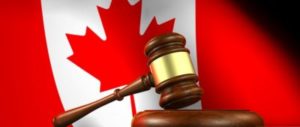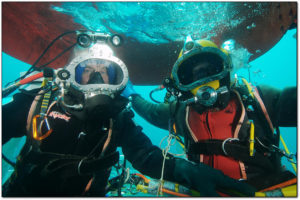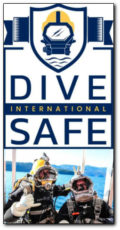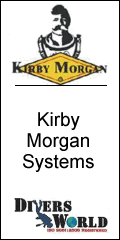Liability on the Dive / Job site: Who is responsible if things go wrong?
By CADC Admin ~ August 8th, 2019. Filed under: EDUCATION, Standards and Regulations.
 Canadian OHS laws are based on the “Internal Responsibility System”. Under this system all workplace stakeholders from senior management to the deckhand are required to play a part in ensuring health and safety at the workplace. Therefore those, including supervisors, who fail to meet the requirements of the OHS (Occupational Health & Safety) laws may be held responsible and therefore liable to prosecution. It is therefore crucial that owners, employers, supervisors and workers are aware of their responsibilities on the work-site.
Canadian OHS laws are based on the “Internal Responsibility System”. Under this system all workplace stakeholders from senior management to the deckhand are required to play a part in ensuring health and safety at the workplace. Therefore those, including supervisors, who fail to meet the requirements of the OHS (Occupational Health & Safety) laws may be held responsible and therefore liable to prosecution. It is therefore crucial that owners, employers, supervisors and workers are aware of their responsibilities on the work-site.
As the specific responsibilities of management and supervisors vary from one province or territory to another, it is difficult to come up with a comprehensive list that will directly itemize the responsibilities of the those responsible for the performance of the work. This is made increasingly more difficult in Canada, with each province or territory having their own OHS regulation. However, guidance to the specific duties of the owners, employers, supervisors and workers may be found by referring to the applicable OHS regulation and being aware of the requirements of Bill C-45.
The lack of harmonization of OHS laws directly impacts the provincial or territory diving regulations. This is something the CADC is attempting to correct with the introduction of the “One Country, One Standard” initiative.
In seven of Canada’s provinces and territories the duties of supervisory personnel are specifically addressed. These include, but are not limited to;
- Ensure the health and safety of the workers under supervision
- Comply with all applicable OHS laws and ensure that the workers do the same
- Ensure all workers are wearing appropriate PPE
- Inform the workers of any known or reasonably foreseeable health and safety hazard it the area they are working
- When required, give written directions on measures to be taken to protect their safety
These duties may be further enhanced by referencing applicable sections in regulations pertaining to diving operations or to the CSA (Canadian Standards Association) diving standards. Some of the duties sited in the regulations and CSA standards include;
- Ensure operation & contingency plans are developed and in-place
- Ensure personnel are competent and fit to work
- Ensure all diving equipment is examined by a competent person
- Appoint in writing a competent diving supervisor
- Ensuring all necessary equipment is provided and in good operating condition
It therefore becomes evident that we must determine who is the “supervisor” for each of these duties. Although many of the duties specified in applicable diving regulations or standards, may be focused towards the dive supervisor, it is also plain to see that others including, owners and employers may also hold a supervisory role.
Listed below are a few examples of the definition of ‘supervisor’ in number of OHS laws;
- A person who instructs, directs, and controls workers in the performance of their duties
- A person who has charge of a workplace or authority over another worker
- A worker who has one or more workers under his or her control or supervision
- A person who is authorized by an employer to oversee or direct the work of workers
It should be noted that these definitions are based on function rather than the title, consequently personnel have been charged under OHS Law even though they did not hold the title of “supervisor”. Therefore, it should be obvious that in a court of law, they may be required to look at who had the control and responsibility of the work, or task, rather than his or her title, to determine who had the responsibility or authority for the work. Examples of supervisory authority include;
- Hire and fire
- Promote and discipline
- Give awards or bonuses
- Schedule work
- Decide make-up of the crew
- Decide which equipment to use
- Discuss safety issues with workers
- Discuss details of the job with the workers
- Deal with worker complaints
- Stop work if hazards arise
- Grant workers vacation and leave of absences
- Determine how workers are paid
In the event the applicable OHS Law does not assign duties to the supervisor or define the position of supervisor, it has to be determined if the responsibilities are “implied” in another definition. For example, “employer”. Do the duties assigned or assumed fall into this definition? Or do the responsibilities of the employer also include those of one who could be the supervisor? The implied responsibilities may be used in prosecuting a supervisor who fails to meet the requirements of the OHS Law.
Remember, in addition to the OHS Law, the commercial diving industry also relies on specific diving regulations and or CSA Standards that also cite supervisor responsibilities and competencies.
 In March of 2004 the Canadian government introduced Bill C-45. The Bill added Section 217.1 to the Criminal Code which reads;
In March of 2004 the Canadian government introduced Bill C-45. The Bill added Section 217.1 to the Criminal Code which reads;
“217.1 Everyone who undertakes, or has the authority, to direct how another person does work or performs a task is under a legal duty to take reasonable steps to prevent bodily harm to that person, or any other person, arising from that work or task.”
Bill C-45 also added Sections 22.1 and 22.2 to the Criminal Code imposing criminal liability on organizations and its representatives for negligence (22.1) and other offences (22.2).
This Bill was introduced following the Westray coal mining disaster, where dispute numerous concern over safety issues, management did very little to correct these issues. Following the incident, the court was unable to convict management of the mining operation for failure to address the safety concerns raised. A Royal Commission investigated the accident, and one of the many recommendations made lead to the introduction of Bill C-45.
The intent of Bill C-45 is to;
- Create rules for establishing criminal liability to organizations for the acts of their representatives.
- Establish a legal duty for all persons “directing the work of others” to take reasonable steps to ensure the safety of workers and the public.
- Set out the factors that courts must consider when sentencing an organization.
- Provides optional conditions of probation that a court may impose on an organization.
Although primarily used in cases of serious violations of OHS Law, the use of the provisions of Bill C-45 are becoming more common. The Bill can and will hold those responsible for the health and safety of the workers accountable for infringements of the Law.
To summarize, the workers are protected by two distinct laws, the Occupational and Safety Law and the Criminal Code. Failure to comply with these Laws may result in financial penalties or imprisonment. For example, in Ontario the penalties under the Occupational Health & Safety Act are;
- For individuals, up to $25,000.00 or up to 12 months’ imprisonment
- Corporations, up to $500,000.00 per charge
Contraventions to the Criminal Code may result in imprisonment or fines in excess of $100,000.00.
Supervisors, including employers have both an ethical and legal responsibility to ensure the health and safety of their workers around the dive operation. This responsibility should not be underestimated or taken lightly. It is imperative that all parties know their responsibilities and practice due diligence in providing this protection. Failure to comply with the spirit of intent of Bill C-45 to protect the safety of the worker can lead to criminal prosecution including imprisonment. It is a very serious offense.
(Ed note: Reprint from Article appearing in the CADC Magazine Spring/Summer 2017 by Dave Geddes – Safety Consultant at DW Geddes and Associates and Director of CADC.)






